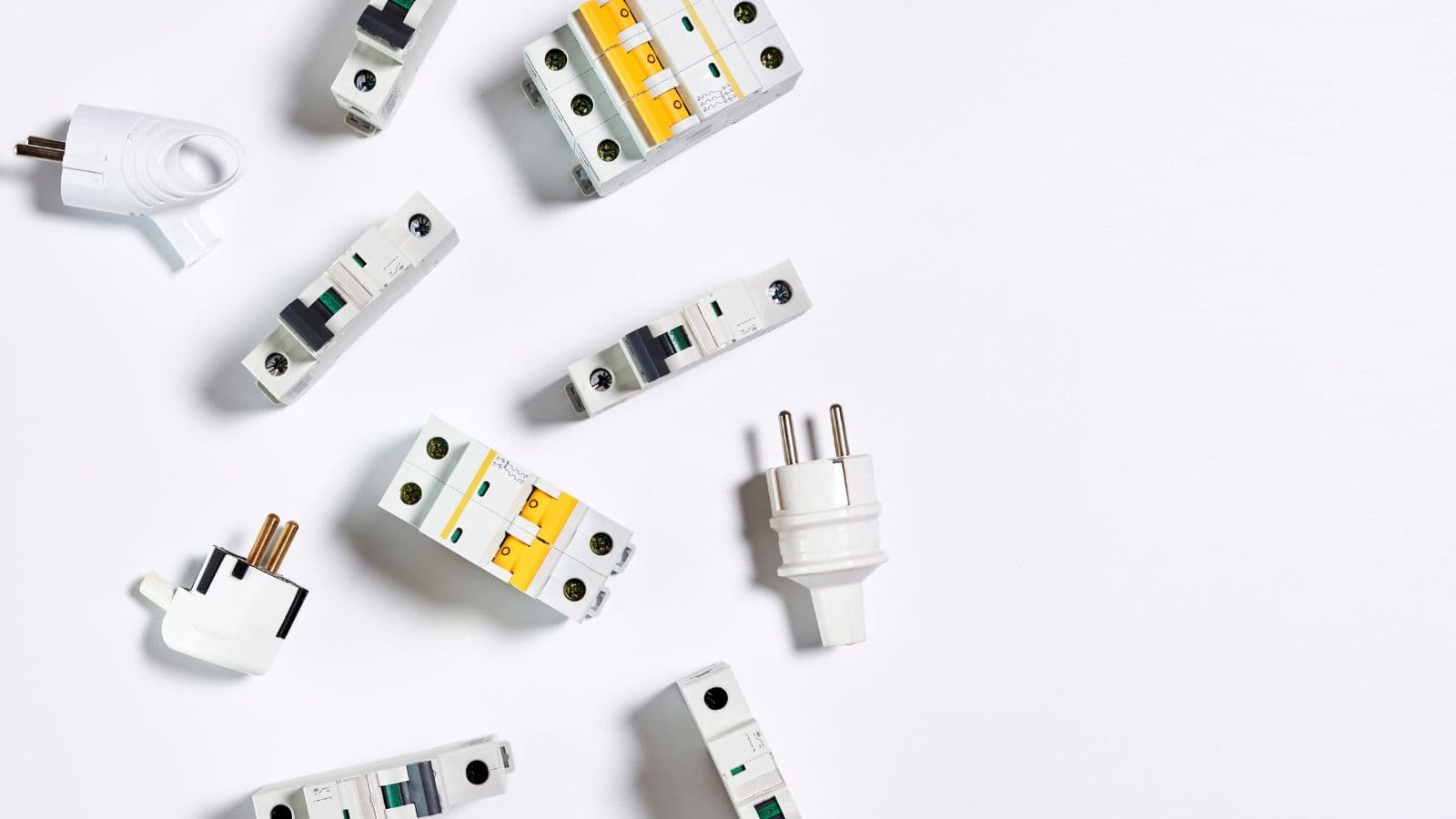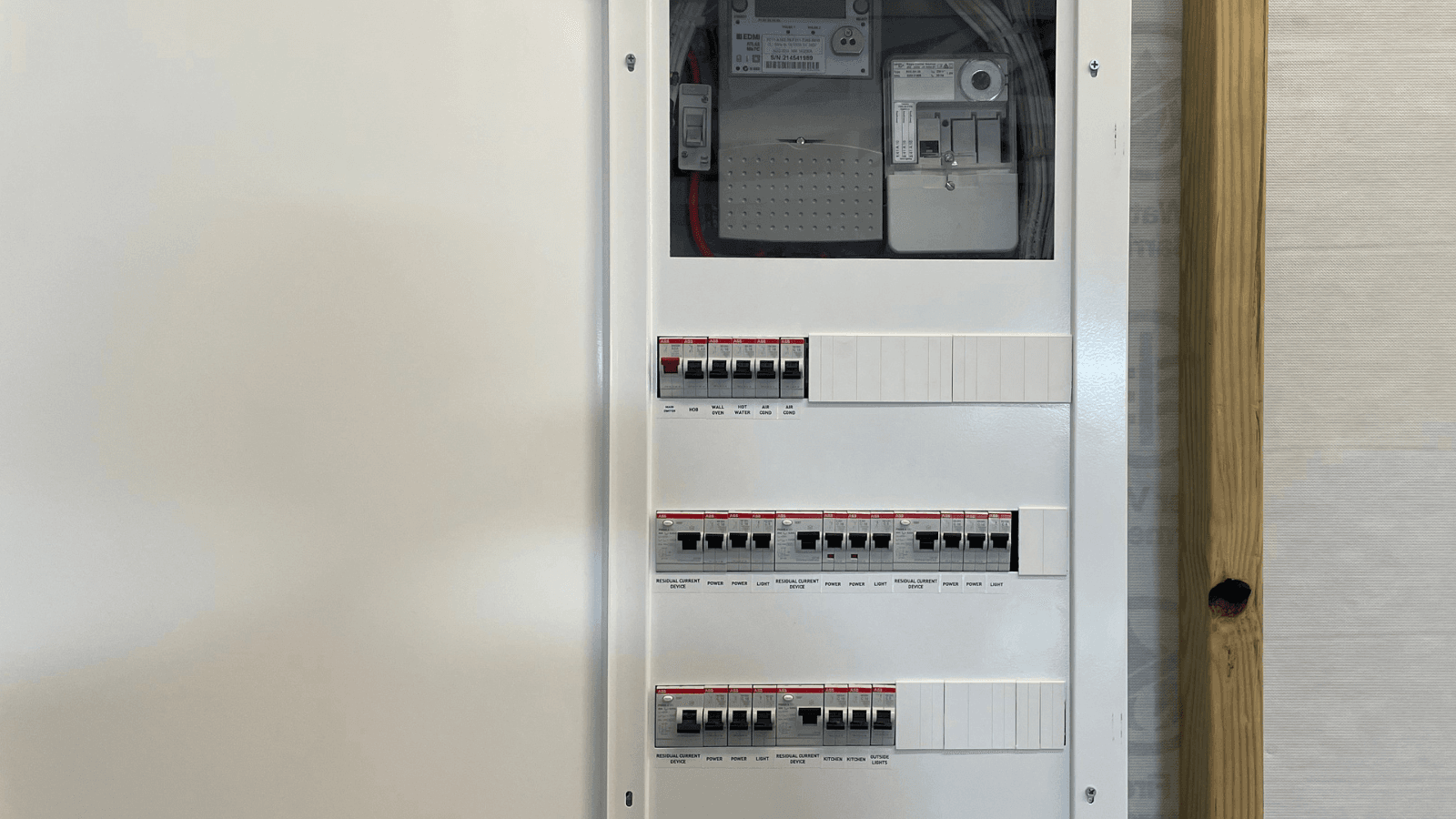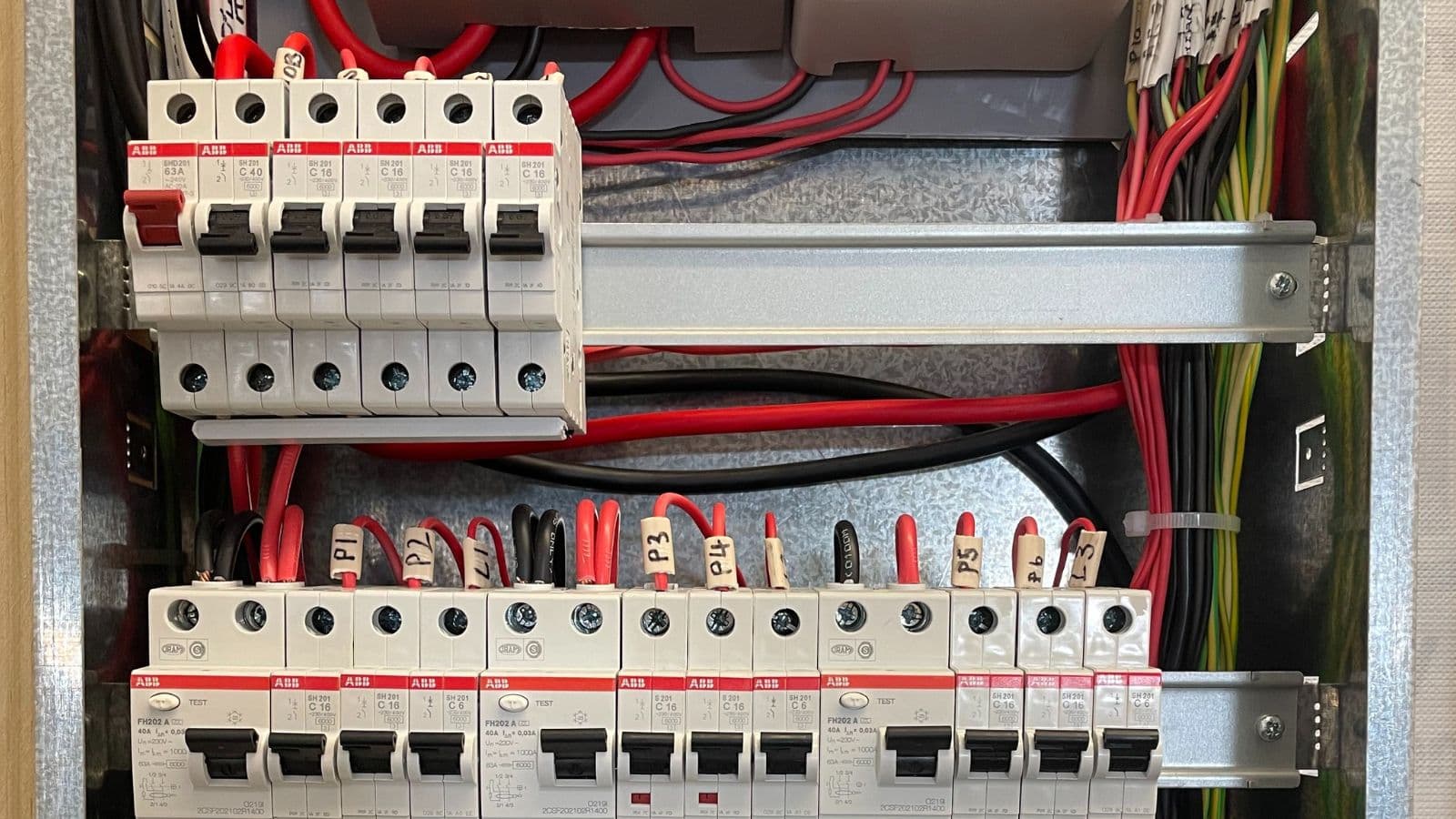Your Electrical Distribution Board
Julz Collett
Head of Trade & Co-Founder

Here’s a wee riddle for you:
I’m a silent sentinel on the wall,
controlling the energy flow to all.
My switches are many, my job complex,
but without me, your home would be a wreck.
What am I?
If you guessed ‘switchboard’, then you’re right! Switchboards are the heart of the home; pumping electricity and powering everything from your favourite Netflix bingeing device to the electric blanket that keeps you warm during those oh-so-cold winter nights.
Now, think of your switchboard as if it was your car. You drive it from coast to coast without a care as it glides on the road like an olympic figure skater until… Clunk! Clack! It starts making noises and you suddenly realise that you haven’t had it serviced for months so you race to the garage to get it fixed. OK, that's not a winning metaphor! What we’re trying to say is that the switchboard quietly does its thing in the background until you need to act because something’s gone wrong with the electricity or it needs to be replaced as part of a system upgrade or wider home renovation. In fact, we’re guessing that any one of these things happened to you, which prompted you to look up switchboards and landed you on this article. Whatever your reason, we’re so glad you’re here because we’re on a mission to make you fall in love with your switchboard.
This article will give you an overview of the switchboard; what it is, what it does and why knowledge is truly power when it comes to the heart of the home - so let’s get into it!
A switchboard, also known as a circuit board, fuse box or power board, is an electrical control panel used to direct and manage the flow of electricity within your home. It’s like an orchestra conductor, masterfully directing the flow of electricity to every corner of your home.
Switchboards are serious business and are regulated by the New Zealand Electrical (Safety) Regulations and Wiring Rules, which, since 2003, have mandated that every switchboard must have a number of critical components but the following three are all you need to worry about for now; the Main Switch to turn off the electricity supply to your home, Circuit Breakers to protect your home, and RCDs (Residual Current Devices) to protect you.
Side Note: it's important to consider the age of your home when assessing your level of protection and risk. Homes built between 1990 and 2003 likely have circuit breakers installed but not RCDs, while homes built before 1990 typically have fuse protection only. The main difference between fuses and circuit breakers is that fuses need to be replaced after they blow, while circuit breakers can be reset.
Let’s get back into the three key components of your switchboard:
Main Switch
The Main Switch is a key player in controlling the flow of electricity in your home - it serves as the on/off switch for your entire electrical system, and controls the flow of electricity delivered from your electricity provider to your switchboard. While it doesn't typically have any specific safety features, it's an essential part of your switchboard.

Circuit breakers
Circuit breakers are designed to prevent the wires in your home from overloading, overheating and potentially catching fire, or degrading to the point that dangerous short circuits happen (essentially sparking to the point that a fire could occur).
Circuit breakers are not designed to protect you from electrocution. That’s where RCDs come in.

RCD
If nothing else, RCDs should be the reason you care about your switchboard and its maintenance because they’re the only safety device designed to protect you and your family from electrocution by quickly disconnecting power. Without getting into the details, think of electricity in a circuit like water in a pipe. Just like a leak in a pipe can cause damage, when electricity escapes a circuit it can be fatal. RCDs are designed to detect electricity leaks; whatever flows out of the circuit must come back. As soon as the RCD detects a very small ‘leakage’ it knows it could be life threatening and will quickly disconnect power.
Just because a switchboard is a silent achiever, doesn’t mean that you should ignore it. In fact, a switchboard has a lifespan of roughly 25 years so you need to make sure that it’s upgraded when the time comes. RCDs should be checked once a year to ensure that they’re working as they should. Just like the engine of your car, your switchboard needs regular maintenance and checks to continue pumping the power. Who got the power? You got the power! Unless you don’t look after your switchboard.
This article has only scraped the surface of switchboards and given you a high level overview of three key components. We’ll delve into each component in more detail over the coming weeks but for now, we want you to walk away understanding the importance of your switchboard and its maintenance. It is critical to the safety of your home and your loved ones so do us a favour and show it some love. If you’re upgrading your existing system, do your research on which switchboard is right for you, and if you’re not upgrading then call an electrician and get your switchboard checked out to ensure it’s up to code and working as it should.